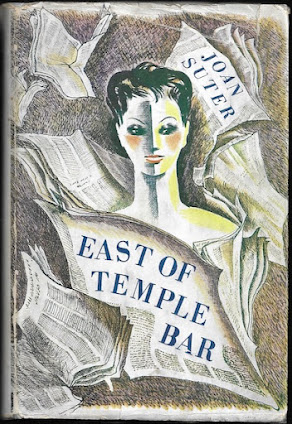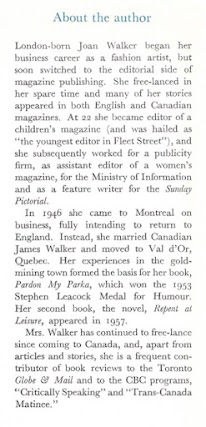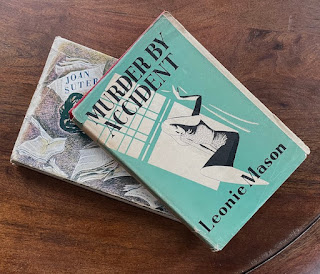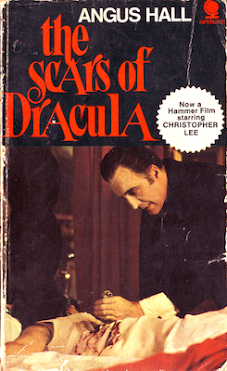The Woman Who Did
Grant Allen
Boston: Roberts Bros, 1895
223 pages
The Woman Who Did was the first Grant Allen novel I ever bought. For nearly two decades, it sat on the shelf as I read later Allen purchases – more than a dozen – most of which I've come to consider the better Canadian novels of the nineteenth century. Some, like
The British Barbarians and
What's Bred in the Bone (winner of the £1000
Tit-Bits Prize!), garnered a fair amount of attention in their day, but none so much as
The Woman Who Did. The novel's publication was countered by damning editorials, preaching from the pulpit, and calls for censorship (it was banned in Ireland), all of which helped make it the author's best selling work.
There's no risk in writing that
The Woman Who Did continues to receive more attention than Allen's other books – and he published more than fifty. Anyone at all interested in the "New Woman" novel or nineteenth-century feminism will have encountered discussion of the work. References are hard to dodge. The accumulation of tit-bits encountered here and there over the years had me thinking that I knew a thing or two about
The Woman Who Did... and so, I put off reading it. I mean, why bother with this Grant Allen novel when there were dozens more of which I knew nothing at all? When I finally pulled the book off the shelf last week, I expected no surprises.
The Woman Who Did begins much as I'd imagined. Its heroine, schoolteacher Herminia Barton, is holidaying in Surrey when she's introduced to London lawyer Alan Merrick by a mutual acquaintance:
"You'll like him, Herminia," Mrs. Dewsbury said, nodding. "He's one of your own kind, as dreadful as you are; very free and advanced; a perfect firebrand. In fact, my dear child, I don't know which of you makes my hair stand on end most."
Mrs Dewsbury is spot on in her prediction; not only does Herminia like Alan, the feeling is mutual. The two prove to be kindred spirits, sharing identical opinions on all topics, the foremost of which are the education and emancipation of women.
"They're trying hard enough to develop us intellectually; but morally and socially they want to mew us up just as close as ever. And they won't succeed. The zenana must go. Sooner or later, I'm sure, if you begin by educating women, you must end by emancipating
them."
"So I think too," Alan answered, growing every moment more interested. "And for my
part, it's the emancipation, not the mere education, that most appeals to me."
"Yes, I've always felt that," Herminia went on, letting herself out more freely, for she felt she was face to face with a sympathetic listener. "And for that reason, it's the question of social and moral emancipation that interests me far more than the mere political one, – woman's rights as they call it. Of course I'm a member of all the woman's franchise leagues and everything of that sort, – they can't afford to do without a single friend's name on their lists at present; but the vote is a matter that troubles me little in itself, what I want is to see women made fit to use it. After all, political life fills but a small and unimportant part in our total
existence. It's the perpetual pressure of social and ethical restrictions that most weighs down women."
These exchanges test the reader's patience, but not that of the couple caught up in the bloom of new love. The challenge to their relationship comes when, three weeks after Mrs Dewsbury's introduction, Alan proposes marriage. Here, at last, is something on which they don't see eye to eye. Replies Herminia:
"My conscience won't let me. I know what marriage is, from what vile slavery it has sprung; on what unseen horrors for my sister women it is reared and buttressed; by what unholy sacrifices it is sustained, and made possible. I know it has a history. I know its past, I know its present, and I can't embrace it; I can't be untrue to my most sacred beliefs."
Alan tries to convince Herminia that their marriage wouldn't be like others. The ceremony would be a mere formality, and would save them both – her particularly – from scorn, hardship, and martyrdom.
The Woman Who Did is a suggestive title, particularly in the context of the time. But what did Herminia do exactly? From the tit-bits, I knew hers to be the story of a woman who has a child out of wedlock and then dares raise it on her own. And so, I anticipated Alan abandoning our heroine. Early on, the narrator appears to confirm expectations, sharing: "...it adds, to my mind, to the tragedy of Herminia Barton's life that the man for whom she risked and lost everything was never quite worthy of her; and that Herminia to the end not once suspected it." But the man Herminia loves proves loyal to the end.
Short months after what is described as her "bridal evening," Herminia becomes pregnant. Alan convinces her that it would be best to have the child abroad. They travel to Perugia, Italy, where he dies of typhoid. After giving birth to a girl she names Delores, Herminia returns to London intent on raising the child as the first "born into this world
as the deliberate result of a free union, contracted on philosophical and ethical principles."
Oh-so-earnest in intent,
The Woman Who Did barely skirts silliness, and has some of the worst dialogue I've read in an Allen novel. Still, I found myself caught up in the drama of it all, and grew to admire Alan and Herminia. The tit-bits led me to expect a tragic ending, but it wasn't anything like I anticipated. The concluding pages were as moving as they were depressing, putting me in a funk that lasted well into this past holiday weekend.
Never have I been affected by so flawed a novel.
Dedication:
Bloomer:
Alan observed almost without observing it that she was gone but for a second. She asked none of that long interval that most women require for the simplest matter of toilet.
Trivia I: Remarkably,
The Woman Who Did novel inspired no less than three responses that took the form of novels: Victoria Crosse's
The Woman Who Didn't, Mrs Lovett Cameron's
The Man Who Didn't, and Lucas Cleeve's
The Woman Who Wouldn't, all published in 1895.
As might be expected, Punch weighed in with a parody, "The Woman Who Wouldn't Do," which can be read
here courtesy of Allen biographer Peter Morton.
This
Punch cartoon is a favourite:
Trivia II: Twice adapted to the silver screen –
The Woman Who Did (1915) and
Die Frau mit dem schlechten Ruf (1925) – both, sadly, lost. The former featured Lionel Barrymore as Alan.
Object: A small hardcover. The decorations on the cover and title page are by Aubrey Beardsley. Ten pages of adverts for other "
Messrs. Roberts Brothers' Publications" feature at the end. A first American edition, I purchased by copy in 2000 for US$9.99 from a Pennsylvania bookseller. The receipt records that I paid a further three dollars in shipping. Have rates really increased so dramatically?
Access: Common in university libraries, but not in those serving the public. The most recent editions are the 1995 Oxford University Press (above; now out-of-print) and a fine Broadview Press book with critical introduction and a generous gathering of appendices. Edited by Nicholas Ruddick, the latter is recommended.
The novel has been translated into French (
Le Roman d'une féministe), German (
Die es tat), Yiddish (
Di froy velkhe hot es gethon), and twice into Swedish (
Hon vågade det and
Hennes livs historia).
The first edition is available for download
here through the Internet Archive.
Related posts:







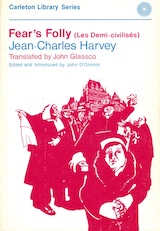


.jpg)





















